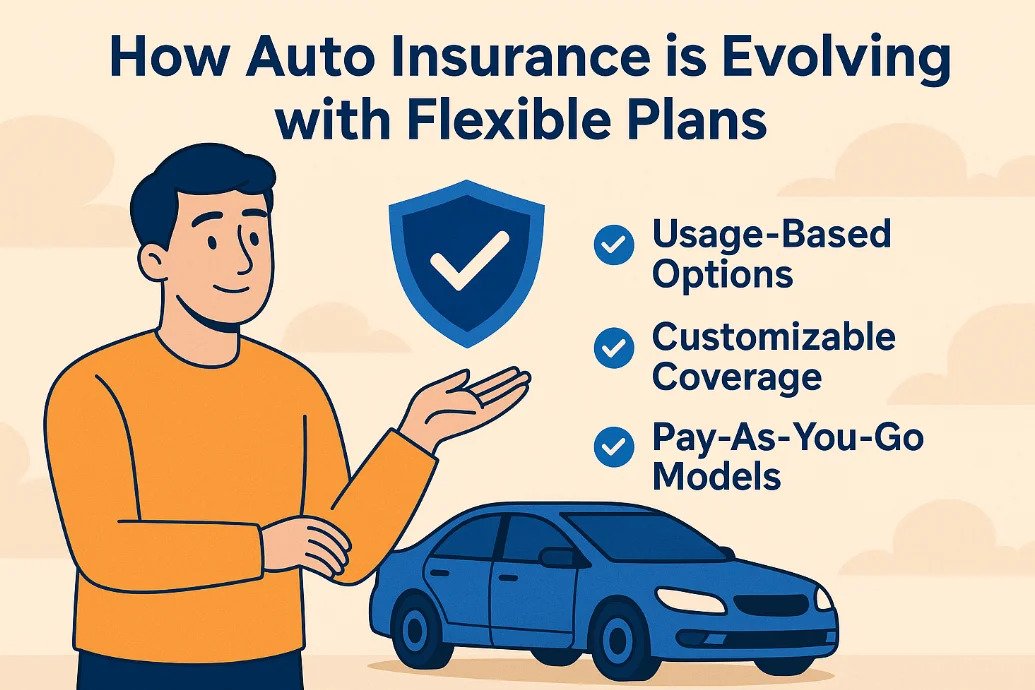In a time when budgets are tighter and consumers are more value-conscious than ever, traditional auto insurance models are rapidly evolving. Flexible payment plans, usage-based pricing, and tech-driven innovations are changing the way people insure their vehicles. What once required a large upfront payment or rigid monthly billing is now being replaced with solutions that align better with real-world needs.
The Rise of Flexible Payment Plans
Auto insurance companies are recognizing that one-size-fits-all payment models no longer work for today’s diverse drivers. That’s why flexible payment plans are becoming the new standard.
Instead of requiring lump-sum payments, insurers now allow policyholders to divide their premium into smaller, more manageable installments. Some even offer options to adjust due dates, split monthly bills biweekly, or defer payments without penalties. This flexibility not only reduces financial stress but also makes insurance more accessible to a wider audience.
A deeper look into this transformation shows how flexible payment plans are changing the way drivers buy car insurance. From low-deposit policies to pay-over-time models, the industry is slowly but surely adapting to economic realities and customer preferences.
This shift is particularly beneficial for younger drivers, gig workers, and families juggling multiple financial obligations. In fact, according to recent industry surveys, over 60% of policyholders would switch insurers if it meant more flexible payment terms.
Usage-Based Insurance: Pay for How Much You Drive
Another major trend shaking up the industry is usage-based insurance (UBI), also known as "pay-as-you-go" or "pay-per-mile" coverage. This model is especially attractive to low-mileage drivers, such as remote workers or retirees, who end up paying significantly less than they would with traditional policies.
UBI works by using telematics devices or mobile apps to track driving behavior, including mileage, braking patterns, speed, and time of day. Safer and less frequent drivers are then rewarded with lower premiums — and in some cases, discounts of up to 30% or more.
As pay-as-you-go insurance continues to grow, more insurers are adopting it to stay competitive in a rapidly digitizing marketplace. The combination of fairness, personalization, and transparency makes UBI an attractive option for cost-conscious consumers.
Alternative Payment Models Enter the Mainstream
Beyond usage-based pricing, a variety of alternative auto insurance payment plans are now gaining traction. These include weekly billing, pay-as-you-earn options, premium financing, and integration with digital wallets or buy-now-pay-later services.
These solutions aim to remove friction from the payment process while offering greater control and transparency. For example, some fintech-driven insurers allow customers to sync payments with their payday schedule or round up spare change to cover premiums.
As discussed in this overview of alternative auto insurance payment plans, the integration of financial technology into the insurance space is a game-changer. These platforms target younger, tech-savvy policyholders who demand ease of use, real-time updates, and mobile-first experiences.
Soon, expect to see even more experimentation — including blockchain-based smart contracts, insurance subscriptions, and peer-to-peer coverage models.
Why This Matters Now
These innovations aren’t just about convenience—they’re about survival. As auto insurance premiums continue to rise due to inflation, vehicle repair costs, and climate-related disasters, drivers are demanding alternatives. Insurers that fail to meet this demand risk losing ground to more agile competitors.
Flexible payment structures and personalized pricing can be game changers, especially for:
- Gig economy workers with fluctuating incomes
- Young drivers looking for low-commitment coverage
- Families with multiple vehicles
- Retirees who drive fewer miles
- Low-income households balancing high living costs
At the same time, state regulators are beginning to take notice and encourage insurers to experiment responsibly, as affordability becomes a policy priority in many regions.
Looking Ahead: The Future of Insurance Payments
The shift toward smarter, more customizable payment systems is just beginning. As AI, machine learning, and blockchain become more integrated into insurance platforms, we can expect even more automation, accuracy, and responsiveness in how policies are priced and billed.
Insurers of the future will likely:
- Offer a range of billing options, from traditional to fully digital
- Integrate with personal finance apps and budgeting tools
- Use predictive analytics to customize renewal offers
- Implement gamified driving rewards linked directly to premium reductions
Final Thoughts
If you’re a driver who feels boxed in by outdated billing practices or can’t stomach paying a year’s premium upfront, the good news is that you now have more options than ever. Flexible and alternative insurance payment models are no longer fringe offerings—they're becoming mainstream.
Whether it’s splitting payments into easier chunks, paying based on your actual mileage, or trying out fintech-powered solutions, the key takeaway is clear: auto insurance is finally evolving to meet the modern driver’s needs.
 Online Clock
Online Clock